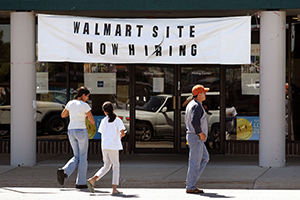Jobless Claims Signal Firings Remain Historically Low

The number of Americans filing applications for unemployment benefits rose the week ended July 30 to a level that still underscores health in the labor market.
Jobless claims rose by 3,000 to 269,000 that week, a report from the Labor Department showed Aug. 4 in Washington. The median forecast in a Bloomberg News survey called for 265,000. Continuing claims decreased.
A limited number of layoffs indicates companies are retaining employees at a time when skilled and experienced workers are in greater demand. Further improvement in the job market will be critical in helping drive consumer spending, the biggest part of the economy, during the second half of the year.
“The message from claims is that there’s no significant slowing in employment growth,” said Jim O’Sullivan, chief U.S. economist at High Frequency Economics in Valhalla, New York. “It reflects an improving economy.”
For 74 consecutive weeks, claims have been below the 300,000 level that economists say is typically consistent with an improving job market. That’s the longest stretch since 1973.
No states or U.S. territories estimated jobless claims last week, and there was nothing unusual in the figures, according to the Labor Department.
Economists’ estimates in the Bloomberg survey for weekly jobless claims ranged from 250,000 to 279,000. The previous week’s figure was unrevised at 266,000.
Jobless claims data can be volatile in July as automakers go through the process of temporarily shutting down plants to retool for the new model year. Given the influence of such seasonal events, economists tend to focus on a rolling monthly average that reduces the effects of weekly fluctuations.
The four-week moving average increased to 260,250 the week ended July 30 after falling to 256,500 in the previous period, which was the second-lowest level since 1973.
The number of people continuing to receive jobless benefits dropped by 6,000 to 2.14 million in the week ended July 23. The unemployment rate among people eligible for benefits held at 1.6%. These data are reported with a one-week lag.
Initial jobless claims reflect weekly firings, and a sustained low level of applications has typically coincided with faster job gains. Layoffs may also reflect company- or industry-specific causes, such as cost-cutting or business restructuring, rather than underlying labor market trends.

